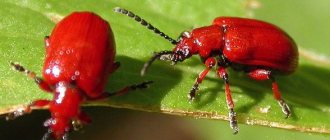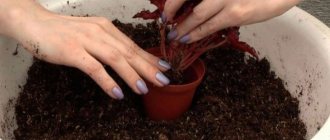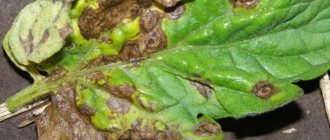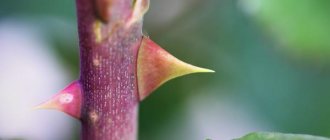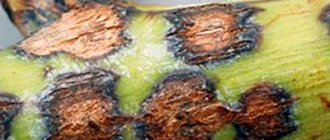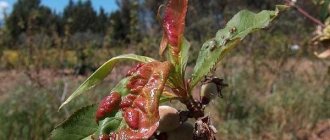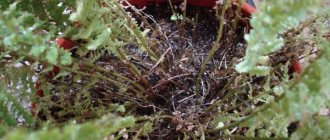In pursuit of flowers that are unusual in color, size and shape, breeders often develop varieties that are not resistant to diseases. This problem has appeared in daylilies and other crops where selection occurs very quickly. The main spring problem for all irises is rot of various natures.
Iris family: brief description
Before telling you what dangers gardeners who breed irises may encounter, it is necessary to briefly describe the characteristics of this plant. Currently, there are many different varieties of the iris family that are optimally adapted to certain climatic conditions. Many of them are rhizomatous. They are perennial, so even a lack of snow cover in winter, coupled with fairly low temperatures, can destroy the plant. Another variety is also found - corm varieties. Gardeners living in Russia give preference to rhizomatous representatives. They grow well in our climatic latitudes with moderate humidity.
The root system of these flowers is well developed. Most often it is located shallow in the ground, and sometimes even protrudes outward. It consists of a rather thick rhizome, from which thread-like thin processes extend. During flowering, irises produce large flowers. Depending on the variety, they can be single or consist of several inflorescences located on a durable peduncle. The range of the palette is so diverse (from white to black) that it is simply impossible to describe everything. Iris inflorescences can be either single-colored or multi-colored, consisting of two or more shades. The flowering period occurs at the end of spring and lasts until approximately mid-June.
The leaves of the iris family are hard and dense. They are elongated and flat in shape, covered with a waxy coating with a whitish tint.
Reason 4. Irises lack nutrients
For full development and luxurious flowering, iris bushes require regular feeding. It is usually carried out in three stages: two before flowering and one after. It is not always easy to understand that irises are lacking nutrients; in appearance, they may look as usual. But there are several sure signs:
- the buds fall;
- the plant blooms sparingly or does not bloom at all;
- the plant grows poorly;
- the root system does not develop;
- the leaves dry out at the edges and curl.
If the reason is a lack of fertilizing, you should not immediately fertilize the irises abundantly so that the plants do not experience stress. Start by fertilizing with nitrogen and potassium. To do this, add 15-25 g of ammonium nitrate and potassium sulfate per 1 sq.m. Two weeks later, repeat the same volume of ammonium nitrate and add double superphosphate (25-30 g per 1 sq.m.).
Organic fertilizers, in particular manure, can destroy irises. After such feeding, the roots may rot and the leaves may fall off. Flowering becomes weak or stops altogether. As a last resort, you can feed irises with organic matter only in the form of a solution (infusion) in a ratio of 1:20.
After fertilizing, water the plants thoroughly.
How to feed irises for lush flowering
To ensure that the irises bloom magnificently and the buds are strong and large, the bushes can be fed:
- wood ash - pour 2 tbsp under each plant. ash;
- leaf humus - spread it in a thin layer at the roots of the irises as mulch and loosen the soil a little;
- minced fresh fish - dilute 400 g of minced meat in 10 liters of water, water the irises every other day at the root. Stop fertilizing two weeks before flowering.
Irises flowers: diseases
Every gardener must take into account the specifics of the region when growing irises. Depending on the climate, plants are susceptible to certain diseases. For example, the northwestern part of Russia is characterized by high humidity, so the rhizomes of local irises often begin to rot, which is why bacteriosis develops. In the southwest, rust is a common problem. Read on to learn more about these and other diseases. In order for the reader to better understand what the affected areas look like, photos will be added to the article.
Diseases of irises and the fight against them directly depend on the characteristics of weather and climatic conditions!
Also, do not exclude pests that can destroy the flower. For example, mole crickets cause constant problems for flower growers in the southern regions. Aphids and slugs, unfortunately, are no less harmful to flowers, so it is important to understand that timely preventive measures will help avoid various diseases.
Harmful insects for iris
Thrips
. By sucking out the juices, they cause deformation and wilting of the iris. For control, karbofos emulsion is used. The calculation is as follows: 75-95 g of solution per 10 liters of water.
Nematode worms
. Leaves affected by worms die. Nematodes get onto irises along with precipitation and from weeds. Prevention:
- weeding planting;
- disinfection of garden tools in formaldehyde solution.
Bronze beetles
. Beetles can be collected by hand. If their number is large, treat the plants with ash or Kinmiksom. Calculation of the drug: 2.5 g per 1 liter of water.
Aphid
. A common cause of mosaic disease. Infected plants are retarded in development, have shortened peduncles and spots on the flowers. It is almost impossible to save an iris with progressive mosaic. To combat aphids, the following drugs are used: Aktara, Inta-Vir. The folk method is treatment with a solution of soda ash from household items. soap.
Slugs
. A mixture of lime and tobacco is used against slugs. Flowers are sprayed with tincture of hot pepper. The soil is freed from slugs by deep digging and removing last year's plant debris.
Scoops
. Before the flowers bloom, the plants are sprayed with Bordeaux mixture. If caterpillars are found in flowers, then use a decoction of Lobel's hellebore.
Medvedki
. To destroy mole crickets, a soap solution is poured into insect holes (take 10 g of soap and 50 g of washing powder per 10 liters of water). A poisonous bait made from a mixture of wheat grains, oil and karbofos is effective.
Wireworms
. The roots are affected. To combat this, anhydrous ammonia is added to the soil and weeded regularly.
Early detection of the first foci of infection and pests, as well as competent agricultural technology, is success in breeding the most exotic and “capricious” varieties of iris.
Irises are one of the most disease- and pest-resistant ornamental plants. These flowers are a favorite object of selection for many summer residents (here is an article about them), in the process of breeding new varieties of which it was discovered that the most exquisite irises are most susceptible to various diseases and pests. At the same time, there is a clear distinction between cases of diseases in flowers depending on the climate zone. So in the north-west of Russia, irises are most often affected by soft rot (bacteriosis), and in the south-west - by rust.
Irises affected by viral diseases cannot be treated. They need to be dug up and burned.
Particular attention should be paid to the safety of plant tubers, since they are often damaged by various diseases and a variety of gnawing insects. Compliance with all agricultural technology requirements and the use of safe planting material allows you to minimize the risk of damage to country flowers by diseases and pests
The most dangerous diseases for these flowers are:
Fusarium
The leaves become yellowish and then acquire a brownish tint.
How and with what to treat
Add 0.2% Fundazol under the rhizomes of irises. Before planting young plants, we disinfect the rhizomes in this solution for 0.5 hours.
Spotting
Spots of various shades appear on the leaves and stems of the iris.
Spray treatment
We spray the flowers with a 1% solution of Bordeaux mixture or 0.3% copper oxychloride.
Septoria/heterosporiasis
Yellowish spots of various sizes appear on iris leaves. Later they become brown and merge. The leaves dry out and the plants bloom poorly. The disease most often develops in damp weather, as well as with a deficiency of phosphorus and calcium in the soil.
At the first signs of disease, spray the irises with 0.3% copper oxychloride; 0.4-0.5% colloidal sulfur.
Wet rot (bacteriosis)
The rhizome rots, the tops of the stems turn yellow and dry out. They show obvious signs of rotting. After a while, the affected parts of the plant die.
How to treat
We dig up specimens affected by this disease and burn them. We disinfect the soil with formaldehyde.
Bacteriosis
Irises are quite unpretentious flowers; they are resistant to diseases. However, if the rules of care are violated, even these plants become defenseless from various types of influence. The most common problem is rotting of the rhizome. This disease of irises (see photos of tubers below) is called bacteriosis. It is quite dangerous and can lead to the death of the flower.
The causative agent of this disease is Erwinia carotovora. The bacterium actively develops at high humidity, so in no case should you oversaturate the soil with water. It directly affects the rhizomes of the plant and causes them to rot. Also, do not oversaturate the soil with organic matter and thin out the flowers in time.
By what signs can bacteriosis be recognized?
- A healthy flower has fairly hard rhizomes. In a sick plant they become soft.
- The rotting process is accompanied by a strong unpleasant odor.
- The leaves turn yellow and then fall off completely.
If the rhizomes are severely damaged, then the flower cannot be cured. Considering that bacteriosis develops quite quickly at temperatures of +13...+17 °C, the damage that diseases and pests cause to irises is irreparable. The only thing that can be done is to separate the still healthy plants from the diseased ones. The latter will need to be burned. If the soil is severely affected, it is recommended to transplant flowers that are not infected with bacteriosis to another soil.
Pests that impair the growth of irises
Diseases and pests of irises are what can cause the rapid death of a plant. If we talk about pests, this is a very serious issue, and every gardener should know what pests can affect iris and how to deal with them. You should not assume that only diseases can destroy a bush; pests in this regard also cause enormous harm.
The most dangerous pest is thrips. Such insects can not only damage the leaves, but also the rhizomes. But it is possible to cope with such insects; for this, every gardener needs to regularly clear their land of weeds.
In the event that insects have damaged large areas of the territory, various preparations must be used. All chemicals can be bought at a garden store; in each specific case, you need to use a separate preparation. To combat thrips, organophosphorus agents are used.
Among all the drugs, experienced gardeners recommend using Mavrik. The drug has a lot of advantages, the main one of which is the small amount of toxins that the product contains.
Among harmful insects, aphids are also dangerous. Among its features is that it affects leaves and flowers. The insect reproduces quickly, which makes the stage of fighting for the plant difficult.
To combat the pest, it is recommended to use 0.3% karbafos emulsion, 15% phosphamide emulsion and 0.5% soda ash solution with soap solution. When fighting aphids, do not forget about clearing the area of weeds, which is also an effective method.
Diseases, pests - all this can cause poor growth of irises on your site.
To avoid difficulties with growing, you should take the advice of experienced gardeners:
- To prevent irises from suffering from diseases and pests, it is worth digging up the soil regularly,
- apply pesticides,
- properly store planting material,
- monitor humidity and temperature. Additionally fertilize with useful substances.
Among the harmful insects that can impair the growth of iris are the larvae of the cockchafer. They can damage the rhizomes and tubers of the bush. To combat pests, you need to regularly dig up the soil and collect all the larvae. It is recommended to use pesticides before planting irises.
See more about this here:
Root (onion) mite
As a method of control, use digging up the flower bed in the fall, be sure to remove unsprouted rhizomes and diseased irises, and observe planting dates. It is advisable to choose a place for these flowers next to the carrot bed. Storage for bulbs must be disinfected with special sulfur bombs, and the bulbs themselves must be dried at a temperature
36 °C and sprinkle with chalk (20 g per 1 kg). Also use an anti-mite treatment on the bulbs before planting.
During the growing season, treatment of irises from these pests involves spraying with a solution of 0.1% “Rogor”, 0.2% “Trichlorometaphos”, 0.2-0.3% “Karbofos” or watering with 0.2% “Keltan”, “Rogor” ” and “Chlorophos”. Watering the soil with insecticides is also allowed.
Onion nematodes
As with the fight against root mites, it is necessary to disinfect the storage and dry the bulbs. For planting, choose a place close to the carrots. Using percalcite will kill nematode eggs and larvae. We also allow watering with ammonia water and treating the soil with urea.
Chafer
May beetle larvae live in the ground for several years. They gnaw on the rhizomes of irises. Mechanical removal of beetles during deep digging helps best. And since they can be found in manure, before fertilizing the soil it is worth sifting it and removing all the larvae. Light traps and the application of anhydrous ammonia are also used for control.
To protect against mole crickets, dig the soil deeply and use traps.
In the fall, dig several half-meter holes and fill them with manure. The mole cricket will settle there for the winter. And as soon as frost sets in, the manure should be thrown out of the pits. This will lead to the death of the pest. It is possible to use water traps. To do this, fill the jars with water, but not completely, but with an indentation of 10 cm and bury them in the ground. Periodically look into the traps and destroy the insects that get there.
Fall armyworm
To destroy pupae, dig deep and periodically loosen the soil. At the beginning of the growing season, spray with a 10% solution of Karbofos and repeat the procedure a week later.
Prevention and treatment of bacteriosis
As soon as the snow cover begins to melt, it is already necessary to take measures to eliminate all possible diseases of irises. Combating them will be much more difficult than preventing them. First of all, you need to take care of the outflow of melt water. This is especially true if the flowerbed does not have a natural slope.
If there is little snow during winter and the air temperature is very low, it is recommended to protect the rhizomes from freezing. It is important to understand that bacteriosis will primarily affect those flowers whose roots have been damaged by frost. To avoid such a situation, you just need to wrap them up.
At the initial stage of the disease, only some part of the rhizome is affected by bacteria. In this case, it can be removed and the cut area treated with ash. Such measures can be carried out before flowering begins.
When replanting iris, it is recommended to treat the roots with a solution of potassium permanganate. To do this, they are soaked for 15-20 minutes. It also wouldn’t hurt to treat the foliage with urea diluted with sulfur (12%).
Dry rot, or fusarium iris
A common fungal disease that damages the vascular system of plants.
The causative agent of iris fusarium is the fungus Fusarium oxysporum.
Period of occurrence of fusarium iris
In humid weather over a wide range of temperatures (+2...+32 °C), the highest probability is at +12...+ 17 °C.
Signs of fusarium iris
Grayish-brown, slightly depressed spots appear on the surface of the rhizome, and the rhizome rots. Rot has no smell. The affected tissues become loose, brown, and later almost black, and the rhizome dries out completely. The source of infection is the soil; the risk of infection increases with increasing soil moisture.
Prevention of fusarium iris
Compliance with agricultural practices and recommendations for plant nutrition. We avoid mechanical damage to the rhizome.
Fighting fusarium iris
Dead plants are removed from the site, and the place where they grew is spilled with copper oxychloride. The remaining plants are treated with fungicides (Vitaros, Previkur, Topsin-M). Returning plantings to their old location no earlier than after 4–5 years.
Dry rot, or fusarium iris
Fusarium
In addition to bacteriosis, there are other diseases of irises, and their treatment is not always possible. Fusarium is a rather dangerous disease. This gray rot affects not only the roots, but even the leaves. A diseased plant becomes covered with a gray coating, which provokes the process of rotting. The main reason for its occurrence is considered to be an excess of nitrogen in the soil. This situation can be caused by improper use of mineral fertilizers, that is, exceeding the dosage.
Infected tubers are carriers of fusarium. If you transplant them to another place, the fungus, entering the soil, will begin to multiply, which can lead to infection of the entire plot of land. The most favorable conditions for it are air temperature +12...+17 °C and excess moisture in the soil.
The first sign of the development of fusarium is the presence of gray spots on the rhizome. It becomes quite loose.
In order to avoid the development of this disease, it is recommended to carefully and regularly treat gardening tools, choose a location on a hill for the flowerbed, and be sure to treat the roots with a solution of copper sulfate with the addition of 5% bicarbonate of soda.
Gray rot of iris stems
The causative agent of gray rot of iris stems
Mushroom Botrytis cinerea.
Period of occurrence of gray rot of iris stems
In cool, damp weather during flowering.
Signs of gray rot of iris stems
The tissues of the buds and stems lose color, turn brown and become covered with a gray mold-like coating.
Prevention of gray rot of iris stems
Sparse planting on well-drained soils, timely destruction of plant residues. Do not overfeed with nitrogen.
Fighting gray rot of iris stems
With the help of drugs Topsin-M, Profit, Oksikhom, Kuproskat.
Wet rot
Diseases of irises and their treatment in practice turn out to be quite complex. Most often this leads to the death of the plant. Sometimes diseases affect other flowers. This is exactly what wet rot is. During the proliferation of bacteria, not only the rhizomes, but also the leaves are affected. As for the latter, they first change color (become brown) and then dry out. The affected roots are no different in appearance, but their insides become powdery. This disease is dangerous not only for irises, but also for tulips, gladioli, and hyacinths.
The cause of wet rot bacteria is manure. Many gardeners use it as fertilizer. In order to avoid infection, you will need to treat the flowers with a solution of potassium permanganate before planting. The recommended dosage is half a teaspoon of this product per 500 ml of water. The rhizomes are soaked for 30 minutes.
How to fight and how to treat irises against pests
Having studied the diseases of irises with photographs and their treatment, one should also highlight the main pests that can pose a danger to this perennial. Their timely destruction is important to maintain the plant’s immunity at a high level. It is necessary to study photos of iris pests with names and descriptions, and also become familiar with control measures.
bean aphid
A small insect of brown or black-green color. The pest forms numerous settlements that feed on the sap of young shoots, leaves, and buds. To destroy, you should use “Iskra”, “Confidor Extra”, “Karate Zeon”.
In autumn, the female bean aphid lays eggs in the basal part of the iris.
Onion nematode
The pest is a white worm, the length of which does not exceed 1.5 mm. It affects the underground part of irises and eats away passages in the rhizome, which disrupts metabolism. After the plant dies, the nematode goes deeper into the soil and waits for a new food source.
To combat this pest of bearded irises, you need to periodically water the soil with Aktara solution and properly store the planting material.
When infected by a nematode, swellings appear on the leaves and the buds become deformed
Root mite
This pest cannot be seen with the naked eye, since its size is no more than 1 mm. The mite prefers to settle in the rhizomes of irises, feeding on the sap of the plant. Most often it appears when planting material is improperly stored, as well as from other crops. To destroy, you should water the irises with Antiklesch and soak the roots for 30 minutes before planting.
Important! A nearby bed of carrots can repel the pest.
Root mites become active in the spring and reproduce in the summer
Thrips
The pest settles in leaf rosettes. It is a small bug, 1.5 mm long, gray-brown in color. It feeds on plant sap, which leads to deformation of leaves and flowers.
To destroy, you should spray the affected irises twice with Karbofos every seven days.
Thrips actively reproduce during hot, dry periods
Bronze beetle
The pest is a large green insect with a metallic tint. It feeds on iris buds, which reduces their decorative value and promotes rapid withering.
When bronzes appear, you need to collect them manually, and also place a blue basin with water next to the plantings, as this shade seduces them. Among the chemical agents, Kinmiks should be used.
The bronze beetle becomes active in the second half of May
Slugs
The mollusk reproduces in wet weather. It feeds on young leaves and buds of irises. With massive damage, the bushes lose their decorative properties and weaken. To combat it, you should sprinkle wood ash and tobacco dust at the base of the irises, and you also need to regularly loosen the soil and prevent the plantings from becoming dense.
Read more Irises have bloomed: what to do next with them, care after flowering
Slugs are nocturnal
Iris fly
This pest is most dangerous for irises. In appearance, it resembles an ordinary gray-black fly. It feeds on plant buds, eating them from the inside. To destroy the pest, you should spray the bushes with Actellik, Decis or BI-58. Carry out the treatment three times, constantly changing the products.
Important! To prevent damage, you should sprinkle the iris bushes with wood ash, tobacco dust, and mustard powder.
Flowers severely affected by iris fly should be burned
Wireworm
The pest is the larva of the click beetle. It is a light-colored worm that eats holes in the rhizomes of irises. This weakens the plant and can lead to death. To prevent damage, you should observe crop rotation, water the bushes with Aktara solution, and also soak the roots for half an hour when planting.
Green manure helps get rid of wireworms in the garden
okov
This caterpillar appears on irises in early spring. The pest feeds on perennial stems, gnawing them from the inside. As a result, the flower stalks break at the base. To protect irises from the pest, you should spray the plantings with Bordeaux mixture twice with an interval of seven days before flowering.
Cutworms contribute to the development of bacteriosis
Heterosporiasis
Let's consider another disease, the causative agents of which are the fungi Mycosphaerella macrospora and Heterosporium iridis. We are talking about heterosporiosis. The affected area is leaves. Gray-white spots appear on their surface. They have a characteristic yellow border. Tall and old leaves are most susceptible to infection. From a small spot, the fungus can grow to cover the entire bush. These are the possible consequences (see example with photo below).
Diseases of bearded irises and other varieties are, of course, easier to prevent than to cure the flower later. First of all, it is recommended not to overdo it with potassium and phosphorus fertilizers. Also, in order to prevent heterosporiosis, you can spray the bushes with fungicides. If, however, the disease has already appeared, then the diseased leaves are cut off and necessarily burned, and the bushes are treated with a solution at least once a week.
Irises in landscape design
The plant has a short flowering period, but it retains its attractive appearance even after the buds fall off. It can be used in group and single compositions. Iris gets along well with almost all types of ornamental plants. Conventionally, all varieties of iris are divided into several groups:
- dwarf
(up to 45 cm) - used to decorate alpine slides and rockeries; - medium-sized
(from 45 to 80 cm) - look good in group plantings; - hybrids
(over 80 cm) - decorate ponds.
When decorating iridariums, iridescent plants of various colors are used. The yellow iris flower is in harmony with purple and blue, and the white bud is in harmony with pink and lilac. A prerequisite for decorating an iridarium is the presence of a source of water and stones. When choosing suitable varieties, their flowering period, growth and harmonious combination with other garden crops are taken into account.
Sheet mosaic
Continuing to study iris diseases, it is worth talking about viral ones. These include the so-called sheet mosaic. This disease manifests itself in the form of yellowed leaves that soon dry out. In order to detect the virus in time, you will need to pay attention to the flower. As a rule, the color of a diseased plant changes greatly; for example, it can change from light to dark matte. Characteristic spotting also appears.
Treatment of a flower affected by a virus is carried out by spraying with a solution of Ridomil Gold and copper oxychloride. The sheets are cut off and burned. All garden tools must be disinfected.
Wireworms
Wireworms are the larvae of click beetles that live in the root zone of flowers. Irises, diseases and pests, the treatment and prevention of which often depend on the quality of digging and loosening the soil, can avoid many “health” problems if the gardener puts in enough effort. To get rid of wireworms, it is recommended to apply it to the soil and regularly destroy the weeds.
Irises have long become permanent inhabitants of our gardens. These beauties are quite unpretentious, but still, gardeners are periodically upset by diseases of irises and fighting them takes a lot of time and effort.
The more refined the plant variety, the more susceptible it is to disease. The most common and widespread varieties have greater immunity. Below we will consider what diseases irises can have, how to prevent them and what to do if the plant does get sick.
Thrips
Irises suffer not only from fungi and viruses. Diseases and pests (the photo is a prime example of this) affect the root system, stems and leaves. There are many dangerous insects that can harm a flower. These include thrips. Their favorite place is the leaf axils. They feed on cell sap. As their number increases, the leaves of the flower become brown and later dry out completely. Spots appear on the roots.
To combat these pests, it is recommended to use a 10% karbofos emulsion. The solution is diluted in a ratio of 75-90 g of substance per 10 liters of water. Spraying is carried out once every 7 days.
Causes of yellowing leaves
The causes of infections that lead to changes in the growth and development of irises can be divided into two types: diseases and pests. The first includes three types of pathogens: bacteria, fungi and viruses. Irises also have a lot of pests: bean aphids, onion nematodes, root mites, cutworms (Iris and winter), gladiolus thrips, mole crickets, slugs and May beetle.
Frequent diseases of irises
One of the most dangerous diseases is soft rot of rhizomes (bacteriosis). It can be seen on plants not only after flowering, but also in spring. The main symptom is the presence of brown spots on the leaves. The plant also has a corresponding putrid odor.
Did you know? Among the people, irises have synonymous diminutive names: irises, cockerels, cinquefoils.
Bacteriosis enters flowers through damage, and its spread is facilitated by excessive waterlogging or freezing of the soil. If a bacterial infection is not recognized in time, the plant will gradually begin to rot at the base. Such flowers must be dug up and burned, otherwise they can infect neighboring irises.
A viral disease such as mosaic is easy to recognize. The leaves are covered with a net-like pattern (a mosaic pattern with yellow stripes). This virus is carried by aphids. Unfortunately, it is impossible to cure irises damaged by the virus, which is why they need to be dug up. But proper care and prevention help avoid mosaics. There are a lot of fungal diseases on the list of diseases dangerous for irises.
Important! If irises grow in the same place for several years without fertilizers, they will inevitably wither and may die.
Here is a detailed list of them, which indicates the main signs of the disease:
- Fusarium - affects the roots of irises. During the growing season, the leaves begin to instantly fade, may turn yellow, and dry out. A grayish coating on the rhizomes helps to distinguish a fungal disease.
- Gray rot - affects the tips of stems with leaves or rhizomes. Overmoistening and frost promote the spread of rot.
- Heterosporiasis (spotting) - first spots with a border appear, then they grow, and the irises dry out. To prevent spotting, it is helpful to simply remove old leaves.
- Ascochythiosis - dark spots appear on the plant, the leaves simply dry out.
- Septoria is the appearance of a large number of small gray spots.
- Ramulariasis is the spread of black or brown spots. Then they turn pale and a yellow coating appears.
- Rust - leads to yellowing and drying of the plant. Initially, when affected by fungi, pustules are noticeable on the tips of the leaves.
- Alternaria blight is the appearance of a black coating on the surface of a flower. Subsequently, the leaves dry out and fall off.
- Rhizoctonia - in wet weather the leaves rot and dry out.
Pests
Bean aphids (dark green or brown insects) primarily attack the leaves: they curl and fade. White onion nematode larvae and cutworm caterpillars suck out the juices of irises, causing the plant to wilt. Such pests are especially widespread during the dry summer season. The root mite affects an already weakened flower.
Did you know? Cebu no sekku is a Japanese iris festival that celebrates courage, military prowess and honor.
Thrips are extremely small insects, and the damage they cause is significant. Gladiolus thrips infects the plant, which as a result turns brown and dries out. Heat and severe drought favor the spread of this pest. A major pest is the mole cricket. It causes severe damage to the underground part of the plant, which noticeably affects the shoots. May beetle larvae also damage rhizomes.
Pests: bronze beetle and nematodes
Bronze beetles appear in flower beds in late spring. They are quite large - about 2 cm. They have a characteristic green tint. You can protect irises from them with Kinmiksom. It is diluted as follows: in one liter of water 2.5 g of the drug. To prevent these beetles, you can use an ash solution.
Nematodes also cause diseases of irises. These worms feed on cell sap. They do not die even in severe frost. The leaf at the puncture site first begins to turn brown and then dies. There are several ways to infect the soil with nematodes:
- through weeds and equipment;
- through rainwater.
Leaf spot, or heterosporiosis of iris
A common fungal disease. Progresses in dense plantings, damp soil and phosphorus deficiency.
The causative agent of leaf spot, or heterosporiosis, of iris
Mushroom Heterospotium gracile.
Period of occurrence of leaf spot, or heterosporiosis of iris
the second half of summer in warm, humid weather.
Signs of leaf spot, or heterosporiosis, of iris
The decorative quality of the leaves decreases - light brown oblong spots with a dark border appear on them. With severe development of the disease, the leaves dry out, but the plants do not die.
Prevention of leaf spot, or heterosporiosis of iris
Removal of diseased and aging leaves, other plant debris, treatment with fungicides. Fertilizing with superphosphate, maintaining a neutral soil pH.
Fighting leaf spot, or heterosporiosis of iris
Treatment with copper-containing preparations and fungicides (Strobi, Ordan), and foliar feeding with calcium nitrate are useful.
Leaf spot, or heterosporiosis of iris
Mole crickets and scoops
Mole crickets can cause a lot of trouble for gardeners. They live in the soil. While moving, they damage the roots and stems of plants with their powerful jaws. To combat these pests, baits must be used. A mixture consisting of karbofos, grain and oil is dug into the ground.
Cutworms also cause a lot of damage. These caterpillars, getting into the stem, eat everything from the inside. Large accumulations of them can be found in wet areas of the ground. For preventative purposes, it is recommended to prevent the flower beds from becoming overgrown with weeds, and also to regularly loosen the soil between the rows. This should be done especially carefully during the egg laying period. It is very good to use Bordeaux mixture for iris disease caused by butterfly caterpillars. A solution is made from milk of lime and copper sulfate. Plants can be sprayed only before the flowering period begins. This will help avoid pest problems. However, if the moment has already been missed, then it is recommended to treat irises with Lobel’s hellebore.
Gray rot of iris rhizomes
The causative agent of gray rot of iris rhizomes
Mushroom Botrytis convolute.
Period of occurrence of gray rot of iris rhizomes
wet weather, especially at relatively low temperatures.
Signs of gray rot of iris rhizomes
In spring, plants begin to grow very slowly. In summer the entire fan dies off. Dry rot forms on the rhizomes. In wet weather, the rhizomes and leaf bases become moldy.
Prevention of gray rot of iris rhizomes
Removing damaged rhizomes along with adjacent soil, disinfecting holes, changing the planting site.
Fighting gray mold of iris rhizomes
With the help of Maxim, Bordeaux mixture, Topaz, Oksikhom, Kuproskat.
Diseases of irises and the fight against them, photos of fungal diseases
Alternaria blight
Each garden will be decorated with beautiful irises, the treatment of which, along with preventive treatments, must be carried out promptly and regularly. Fungal viruses are another problem that both new and experienced gardeners face. With Alternaria blight, a black coating appears on the edges of the leaves.
Over time, these leaves dry out completely and fall off the stem. If infected plants are not removed, the infection may persist in the soil until the next season in the form of spores. Systematic spraying of the beds with Bordeaux mixture will help get rid of such a scourge.
Rust of irises
As a result of this fungal disease, many brown pustules appear on the tips of the leaves, which lead to their yellowing and further drying. On the affected plants with the onset of autumn, you can notice a special coating where the wintering stage of the fungus is located. Its spores tolerate severe frosts well and, with the arrival of the first warmth, begin to infect young shoots.
Draining the soil in flower beds, destroying diseased leaves and treating those that have been preserved with preparations containing sulfur (Tiovit, garden and colloidal sulfur) will help fight rust. Spraying should be done every 2 weeks until signs of the disease disappear.
Ascochyta blight
Numerous dark marks with watery edges that manifest the disease, leading to premature drying of the affected leaves. Ascochyta blight, like other fungal infections, persists in plant debris and soil. To prevent its reproduction, you need to treat irises before and after flowering with preparations containing copper - copper sulfate or "Hom".
Heterosporiasis
Its signs are round or oval markings on the foliage, which are initially yellow in color and then become gray-brown. Some time after infection, not only these spots begin to darken, but nearby tissues begin to darken, on the surface of which fungal spores form.
Treating irises with copper-containing compounds, as well as collecting and burning plants at the end of autumn, will help get rid of heterosporiosis.
Gray rot
If it’s your turn to think about why the leaves of irises turn yellow after flowering, you can rest assured that the plants were attacked by two pathogenic fungi at once. The first of them affects the rhizome with dry rot and contributes to the appearance of specific round and dense new growths on it.
The second fungus becomes active in humid weather, attacking foliage and flowers, turning them brown and covering them with a grayish coating. Yellowing spots are a sign of the development of spores, which subsequently remain in the soil after flowering has ended.
You can get rid of gray rot by selecting healthy roots for propagation, planting them in well-drained soil and, of course, getting rid of already infected irises.
If the disease rages in the summer, we go to the pharmacy
During prolonged warm and rainy weather in the summer, widespread bacteriosis may occur, including on flower stalks. In this case, I identify all diseased plants, cut them off and spray the plants with Levomycetin at the rate of 1 tablet per 1 liter of water. You can alternate antibiotics, I also used Doxycycline . In this weather, in the fall, sprinkle and dust the fans of leaves with wood ash, to which I add Fundazol or Colloidal sulfur.
Preventive measures
Prevention of diseases of irises consists of following planting rules: the place must be well drained, ventilated and insolated. The soil has a sufficient content of calcium-phosphorus compounds and the required level of acidity. Before planting, the roots of flowers must be etched and affected areas removed, and the contaminated soil must be disinfected.
Important! When applying fertilizers, it is prohibited to use fresh manure. Plantings must be periodically thinned out and mulched in the fall. When watering, stagnation of moisture should be avoided.
One of the effective preventive measures is spraying with copper-containing preparations. Viruses are prevented by disinfecting instruments and observing quarantine.
Prevention of bacteriosis includes spraying flowers with antibiotics (but they should not be abused).
Irises are a decoration for summer cottages, but they can be affected by fungal, bacterial, viral and other diseases. Experienced gardeners should know the signs of disease in order to determine, for example, why their favorite iris has not bloomed, or why iris leaves are turning yellow and deteriorating, what should be done. With proper care and timely treatment, irises will again delight with lush flowering.
Rust
Appears on the leaves in the form of numerous brown pustules. Then the leaves turn yellow and dry out. In September, a velvety coating forms on the affected leaves - this is how the fungi enter the wintering stage. After overwintering, fungal spores infect valerian. In spring, spores begin to actively develop on valerian and attack irises. You can fight rust in the following ways:
- do not plant irises next to valerian or maintain a sufficient gap between these plants;
- choose only drained areas for flowers;
- treat affected specimens with sulfur preparations - Thiovit, Garden sulfur, Colloidal sulfur; The treatment interval is 14 days until the disease disappears.
Rust
Resuscitation of seemingly hopeless
If the iris stem root is severely damaged, I wash it, cut everything down to healthy tissue, and sometimes only a piece of stem root with a healthy bud remains. But it can also give us a start if the variety is valuable.
Next, it is better to soak the rest of the planting material in potassium permanganate or bleach, and then apply everything the same as in the previous case.
This iris must be planted in a new place in a mixture of soil and sand. It is better to remove the soil from the remaining hole, add fresh soil, or spill it with bleach. I have these in my care (see photo).
When transplanting fans in the autumn, I cut them and dry them, and then dip them in a thick solution of Fitosporin-M, lightly dry them and plant them.
Causes of common problems and their solutions
Errors in the maintenance of gloxinia during the flowering period lead to serious consequences. Correct and timely identification of the causes will increase the chances of saving the plant.
Do not bloom
Why do gloxinia buds not fully open, then turn brown and become soft?
Causes:
- there are too many buds on the plant with insufficient fertilizing;
- soil depletion;
- lack or excess of lighting;
- incorrect temperature conditions;
- low air humidity;
- pests: spider mites or thrips.
Solution:
- Inspect the plant.
- In case of pest attack, treat with insecticides following the instructions on the product packaging.
- During the period of growing green mass, it is necessary to apply nitrogen fertilizers.
- When the first buds form, you should switch to a mineral complex rich in potassium and phosphorus.
- Adjust the lighting mode.
- The plant needs bright, diffused light.
- The duration of daylight hours for gloxinia should be 12-14 hours.
- If the leaves stretch upward, the plant does not have enough light. In this case, you need to move the pot to another window sill or organize artificial lighting.
- If there is an excess of light, it is necessary to shade the gloxinia with gauze, tulle, paper from direct rays of the sun and place the plant away from glass.
- Adjust the temperature in the room. The daytime temperature favorable for gloxinia is +20+22ºС, at night +18ºС. The rest period should take place at +10+14ºС.
- Adjust the air humidity level by placing a wide container of water next to the plant.
- Spray the surrounding area with a spray bottle, avoiding water getting on the gloxinia.
- On a small windowsill it is convenient to use two pallets.
- Fill the lower, deeper pan with fine gravel, expanded clay and moisten with water. Place the second tray with the pot on the gravel.
Turn black
The buds wither without blooming and become black and dry.
Causes:
- wintering tubers in too cold a room;
- excessively dry air;
- depleted soil;
- dry soil or too frequent soil moisture.
Solution:
- Examine the gloxinia tuber and treat it with Epin, a drug that has an anti-stress effect.
- Increase indoor air humidity.
- In hot weather, shade the plant, protecting it from direct sunlight.
- Replace depleted soil with fresh soil.
- Maintain intervals between waterings.
- Establish timely soil moisture, preventing the earthen clod from drying out.
They're drying up
The buds dry out without ever blooming.
Causes:
- dry air;
- cold air, drafts;
- high air temperature;
- excess or lack of lighting;
- depleted soil;
- overflow
Solution:
- Raise the humidity level in the room.
- Organize ventilation, avoiding drafts.
- Adjust the lighting mode.
- Feed the plant with phosphorus-potassium fertilizers.
- Adjust watering.
- The soil should be loose and slightly moist.
Empty inside
When opened, the sepals reveal a small green pea instead of a bud. After a while, the peduncle turns brown. The undeveloped bud falls off.
Cause:
- cold winter;
- stress from storage at too low a temperature.
Solution:
- Remove a defective bud by carefully cutting off the peduncle.
- After some time, a new bud will form.
- A full flower should open.
- Spray several times with Epin according to the instructions on the package.
Rotting
IMPORTANT: Dry black buds should not be confused with rotting ones. When the bud rots, it turns dark brown or black, but remains soft and moist. Causes:
Causes:
- waterlogging of the substrate;
- soil pH is too acidic;
- excess nitrogen.
Solution:
- Limit watering for several days to allow the substrate to dry out.
- Water gloxinia only through the tray.
- Make sure that the soil is not overly wet, but do not allow it to dry out.
- If the soil is acidic, you need to replant the plant and completely replace the soil mixture.
- Use only complex fertilizers, which contain, in addition to nitrogen, phosphorus and potassium. Carry out two or three treatments with Fitosporin, Maxim or another fungicide to prevent tuber rotting. Treat the copy with Epin.
- If after the measures taken the problem does not go away, most likely the tuber has begun to disappear. In this case, you need to carefully examine it.
- Cut brown spots with a sharp knife to healthy tissue.
- Treat the cut with crushed activated charcoal or charcoal. Place the tuber in a new pot containing calcined drainage and new soil mixture.
Common diseases
Despite their general resistance, irises still suffer from diseases caused by bacteria, fungi and viruses.
Most often, cockerels are affected by root rot, another name is “bacteriosis”, since it is caused by bacteria. Diseased flowers do not grow, the foliage becomes brown and dry. The rhizome is destroyed from the inside, which leads to the death of the plant. The development of bacteriosis is promoted by hypothermia of roots, deficiency of phosphorus-calcium compounds, as well as contaminated manure or soil.
Fungal fusarium manifests itself in the rotting of the roots of the flower. As a result of the damage, the plant's roots, leaves and flower stalks dry out. Most often, irises become infected with fusarium when the roots are separated and exposed to infected soil.
Fungi also cause gray rot disease, which affects the stems and foliage of irises, as well as rhizomes. Diseased leaves lose color and density, rot, covered with a gray coating. The roots are covered with black tubercles from the sclerotia of the parasitic fungus.
Fungi are also to blame for the development of heterosporiosis (leaf spot) in flowers; the outermost leaves of the fan are covered with white spots with a watery border, and as they develop, black dots of spores appear on them. The disease also affects the inner foliage, after which it dries out. It is necessary to combat heterosporiosis, first of all, by removing dry leaves.
On a note! Ascochyta blight on iris leaves is caused by a fungus called ascochyta. The disease is manifested by the appearance of brown spots and black spots.
Septoria is also a fungal disease, and Septoria fungi are to blame for it. They cause pale gray small round spots.
Fungi of the genus Ramularia provoke the disease ramulariasis: small black spots of necrosis with a yellow spore coating.
The most famous fungal disease is rust. The leaves become covered with brownish spots containing fungal spores. The foliage dries and falls, but the seeds of the parasitic fungus still remain on it, so it is important to promptly eliminate diseased leaves.
Rust on iris
Mosaic disease is caused by viruses and appears as a yellow, net-like pattern similar to a mosaic. Affected flowers stop growing and flower stalks do not develop. It is impossible to treat such plants - they die.
Cocktails for prevention
Preventing diseases is always easier than curing a sick pet. For prevention, I carry out regular spraying with “cocktails”. I select the composition of the “cocktail” according to the growing season of the plants.
- The first spraying after spring cleaning is carried out with Previkur on the “potatoes”, capturing the neck of the stem root.
- When the plants begin to grow, I treat them with a mixture of Epin + Topaz + a systemic insecticide.
- I use this mixture again after 2 weeks. This increases growth energy and works great against fungal diseases and insects.
- I subsequently treat it with an insecticide several times every 2 weeks to prevent the appearance of thrips and iris flies.
Stop and neutralize
Then there may be different options. If it is a hot sunny day and the cuts are exposed to the sun, you can leave them to dry without treating them with anything. The sun will kill everything on the surface.
You can process the cuts, but in damp, cloudy, cool weather this must be done. How do I process? I use different options.
- Treatment with hydrogen peroxide . Sold in a pharmacy, not expensive, in a convenient bottle with a thin tip, convenient.
- After the peroxide stops foaming, I lubricate the cut area with a brush either with a mixture of an alcohol solution of chloramphenicol and brilliant green , or sprinkle it with metronidazole .
The soil around the plant can be shed with hydrogen peroxide or a solution of bleach or bleach .
